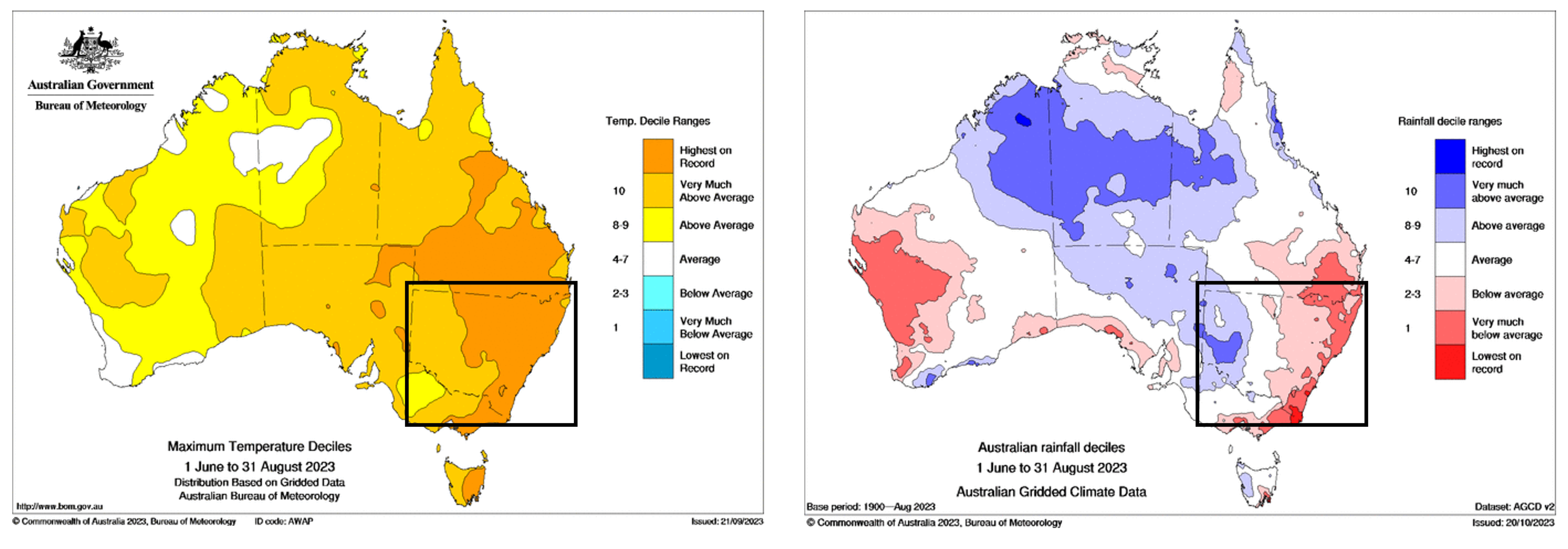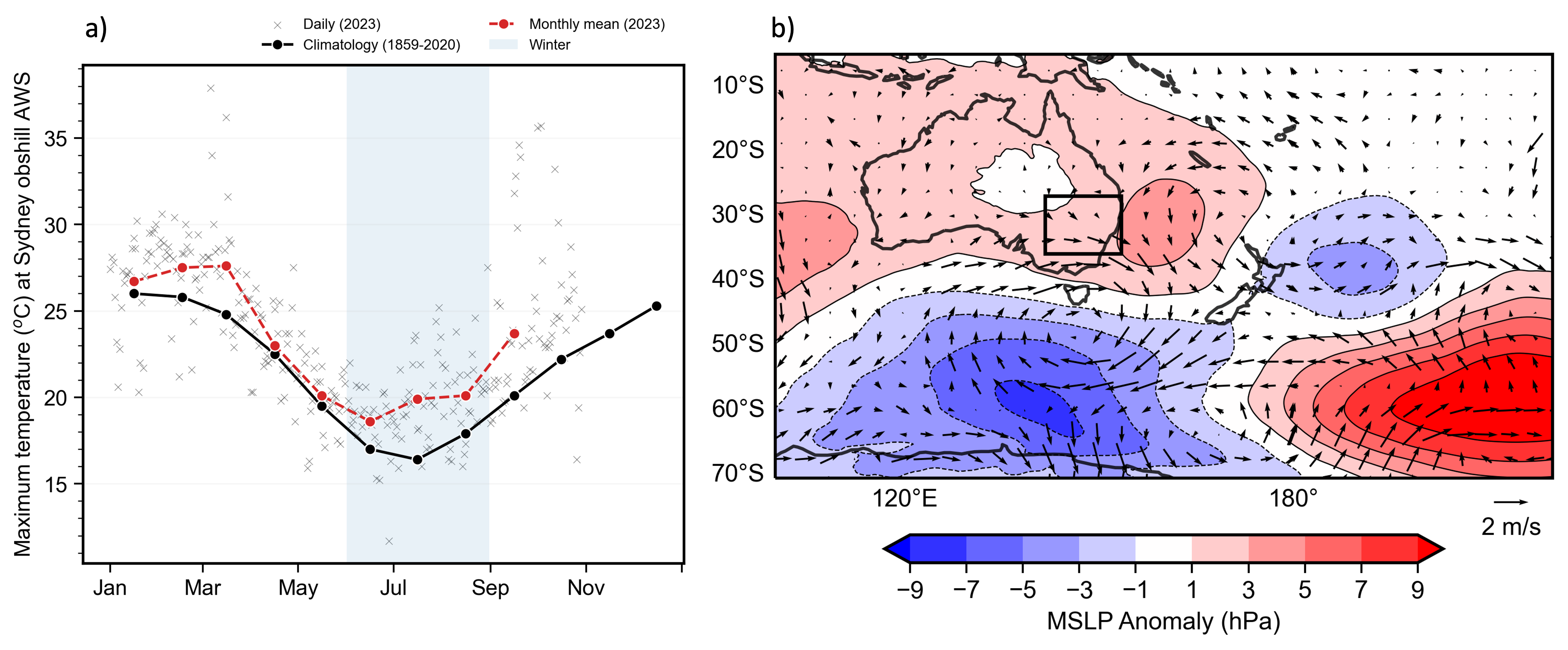- Sydney and the state of New South Wales experienced the warmest winter on record.
- Large scale synoptic weather patterns and anthropogenic greenhouse warming were major driving factors.
- The heat and rainfall deficits during winter accelerated the early onset of the bushfire season in the state.
Against the backdrop of the warmest winter on record in Australia, the state of New South Wales and the city of Sydney experienced their warmest recorded winters.
The state of New South Wales experienced daily maximum temperatures 2.23°C above the 1961-1990 average. In addition, there was below average rainfall along the NSW coastline (Figure 1). The Bureau of Meteorology reported that more than 10 sites across Sydney (with active weather stations) had their highest winter-average daily maximum temperature on record. One of the sites, Sydney Observatory Hill (Figure 2a) experienced a winter-average daytime temperature approximately 2.43°C above the climatological mean. The temperature in the month of July was around 3.5°C higher than the long-term average.

Persistent high-pressure systems sat over Australia’s south-east coast (Figure 2b), preventing easterly winds that often bring showers and rain. This led to clearer skies, allowing more heat from incoming solar radiation.
Moreover, the unusual westerly and north-westerly winds over the state of New South Wales brought warm and dry air, contributing to the heat. This warming, as a result of the large-scale weather patterns on top of the background warming from anthropogenic greenhouse gas emissions, resulted in the record-breaking temperatures.

Warm winters are often considered pleasant. However, unusually warm winters can have a significant impact on ecology and agriculture and bring an early onset of the bushfire season. Elevated temperatures, or prevailing dry conditions, can often damage crops such as rice, canola, wheat, barley, and lead to lower crop yields. New South Wales Rural Fire Service announced an early start to the fire danger season in the north of the state, with over 70 blazes already active by August.
As warming continues, winters in south-east Australia will continue to warm and cool-season heat events will become more frequent and intense.
Research contacts:
Aditya Sengupta, aditya.sengupta@student.unimelb.edu.au Dr Andrew King, andrew.king@unimelb.edu
